Veterinary teams are no strangers to doing more with less. Whether it’s stretched budgets, limited staff, or mounting patient needs, practices are constantly adapting to meet high standards with finite resources. Now, with economic uncertainty layered on top, that balancing act is only getting harder — requiring sharper strategies and even more resilience behind the scenes.
Between the global geopolitical shifts and the recent (now on hold) announcement of new U.S. tariffs on foreign goods, it’s clear we’re operating in an environment where predictability is in short supply. While these economic shifts might seem abstract, their consequences are concrete and immediate: higher costs for medications, equipment, and clinical necessities in veterinary practices of all sizes. In this landscape, taking a proactive, strategic approach toward inventory isn’t just helpful — it’s essential.
Enter Inventory Ally. Built with veterinary practices in mind, it bridges the gap between reactive inventory management and informed planning. By providing clear visibility into cost fluctuations and usage patterns, it equips practices with the practical insights needed to navigate uncertainty. While Inventory Ally won’t prevent market volatility, it can help you anticipate changes rather than merely respond to them — preserving both resources and peace of mind.
Here’s how you can take action to keep your practice steady — even when the outside world isn’t:
1. Monitor Cost Trends and Set Alerts
Supply prices rarely jump overnight — but small, steady increases can go unnoticed until they start affecting your margins. If you’re not tracking cost trends in real time, it’s easy to miss critical shifts. Unexpected price increases can throw off budgets, impact pricing decisions, and slowly erode profitability — especially on high-use items. Catching trends early gives you more control and more time to respond.
What You Can Do:
Regularly track price fluctuations and identify unusual spikes early.

Inventory Ally Helps By:
- Offering real-time dashboards to monitor changes in inventory costs.
- Highlighting pricing discrepancies between past and current purchases to catch rising costs quickly.
Stay Ready, No Matter What
Rising costs and stock issues are tough — but not unbeatable. Book a demo to see how Inventory Ally can help your practice stay in control.
2. Prepare for Product Substitution
When stock runs out or prices spike, scrambling for alternatives can disrupt care and drive up costs. Without a clear substitution plan, you’re stuck reacting under pressure. Planning ahead ensures continuity, reduces delays, and gives you more flexibility when items become scarce or unexpectedly expensive.
What You Can Do:
Identify alternative brands for must-have items and plan substitutions in advance.
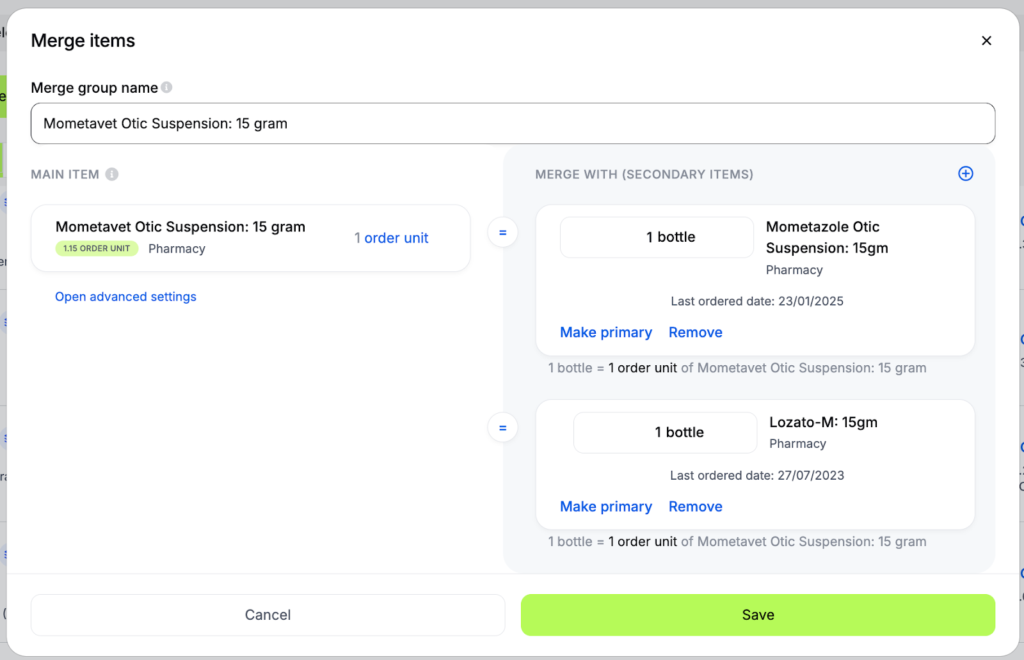
Inventory Ally Helps By:
- Identifying slow-moving products to add efficiencies to your replenishments and encourage the use of online pharmacy.
- Grouping like items and products within the platform.
- Maintaining historical usage data so substitutions reflect real consumption patterns.
3. Adjust Pricing and Leverage Supplier Incentives
Price increases are inevitable — but how you respond to them can make all the difference. Instead of absorbing every cost hike or risking client frustration with sudden pricing changes, take a proactive approach. By understanding your spending patterns and optimizing supplier relationships, you can make informed decisions that protect your margins and maintain transparency with your clients.
What You Can Do:
Respond to rising costs by fairly adjusting client fees and working with suppliers to find discounts.
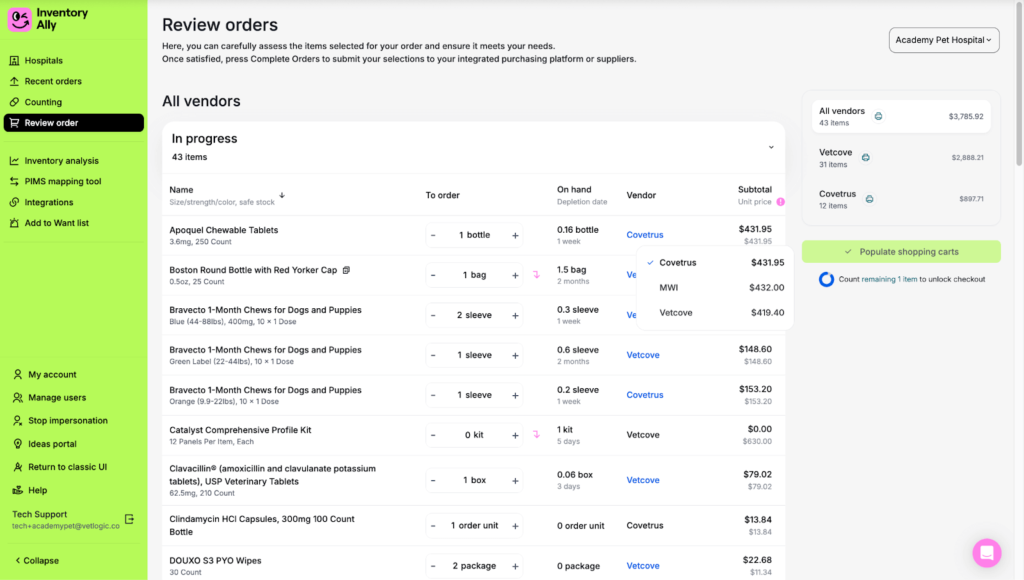
Inventory Ally Helps By:
- Connecting with Vetcove and integrated distributor data to compare spending by category and maximize the potential of supplier relationships.
- Enabling data-informed pricing decisions through clear spend reports and cost-per-item tracking.
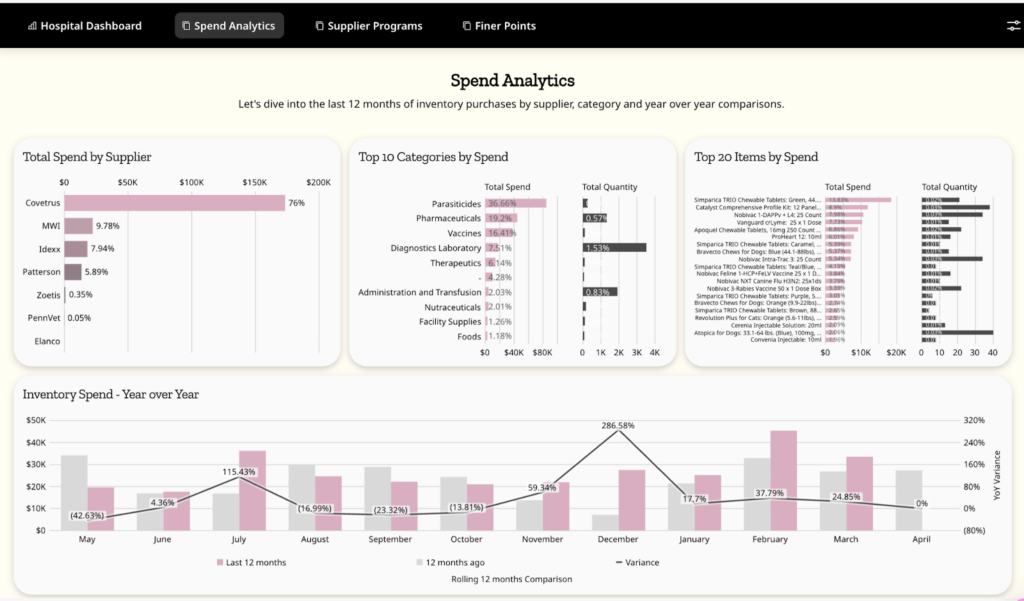
4. Avoid Panic Buying and Overstocking
When supply chain disruptions hit or costs rise, it’s tempting to stockpile. But panic buying often backfires — tying up cash, increasing waste, and cluttering already-limited storage. A smarter strategy is grounded in accurate forecasting and routine ordering habits, not reactive purchasing.
What You Can Do:
Resist the urge to hoard supplies—this increases waste, ties up cash, and adds storage strain.
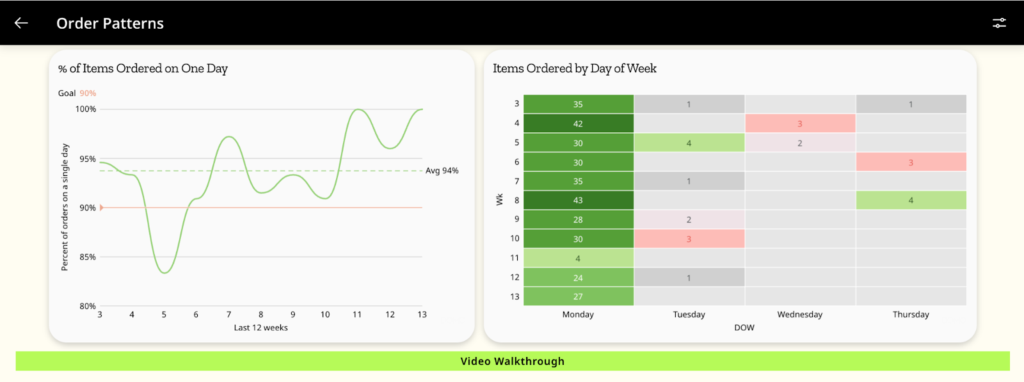

Inventory Ally Helps By:
- Generating accurate reorder points based on real usage and forecasted demand.
- Streamlining ordering to one or two days per week, reducing reactive purchases.
5. Minimize Waste, Redundancy, and Shrink
An overstuffed inventory can be just as risky as an understocked one. Outdated, rarely used, or redundant products take up space and quietly drain budgets. Cleaning up your shelves makes it easier to streamline operations, and reduce hidden costs.
What You Can Do:
Clean up your formulary, remove rarely used items, and consolidate inventory categories.
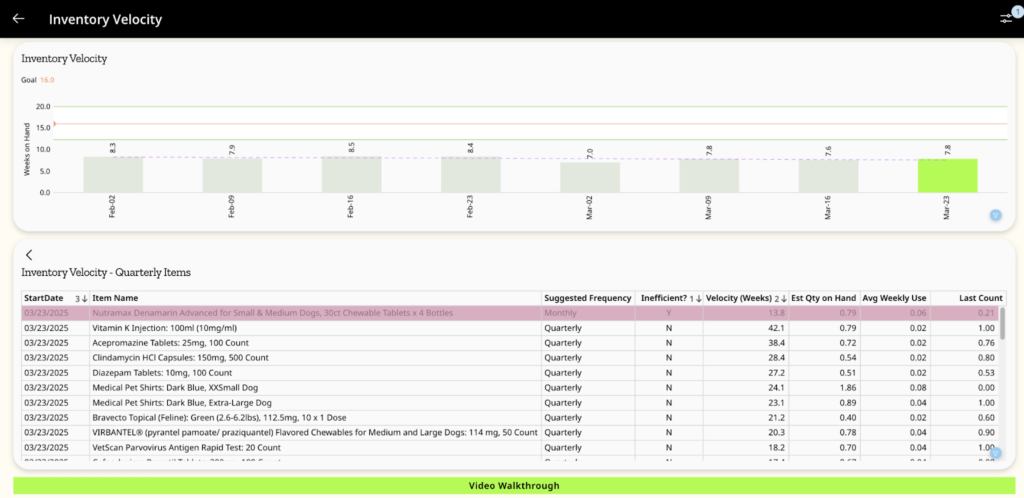
Inventory Ally Helps By:
- Identifying slow-moving, redundant, or obsolete items with detailed inventory reports.
- Supporting formulary consolidation by spotlighting high-value, high-usage items.
6. Maintain Accurate Min/Max and Safety Stock Levels
Getting inventory settings right is a key part of avoiding both shortages and overstock. But it’s not a one-time setup — it should evolve with your practice’s needs. Dynamic adjustments based on real data help ensure that you’re ordering just enough, just in time — not too much, and never too late.
What You Can Do:
Ensure inventory settings are dialed in to avoid both shortages and overstocking.
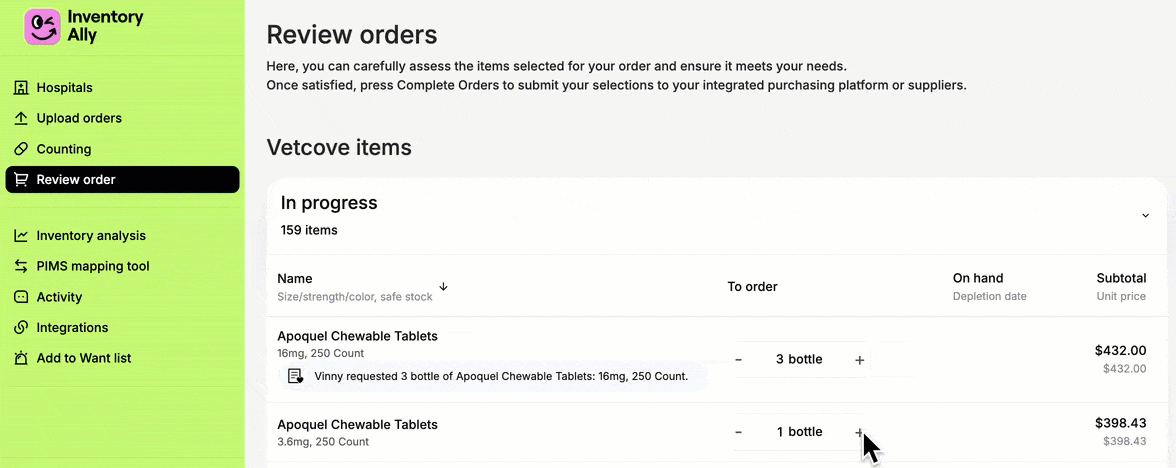
Inventory Ally Helps By:
- Automatically adjusting reorder points and safety stock recommendations based on real-time usage and hospital-specific demand patterns.
- Allowing manual overrides with justification, creating a more tailored inventory plan.
7. Track Usage Patterns and Inventory On Hand
Knowing what’s in stock and how fast it’s being used can reveal a lot — from which products need reordering, to which ones might be bleeding cash. Visibility into real-time inventory and usage trends empowers better financial forecasting and more confident decision-making.
What You Can Do:
Keep a pulse on what’s being used, how fast it’s being consumed, and what’s in stock.
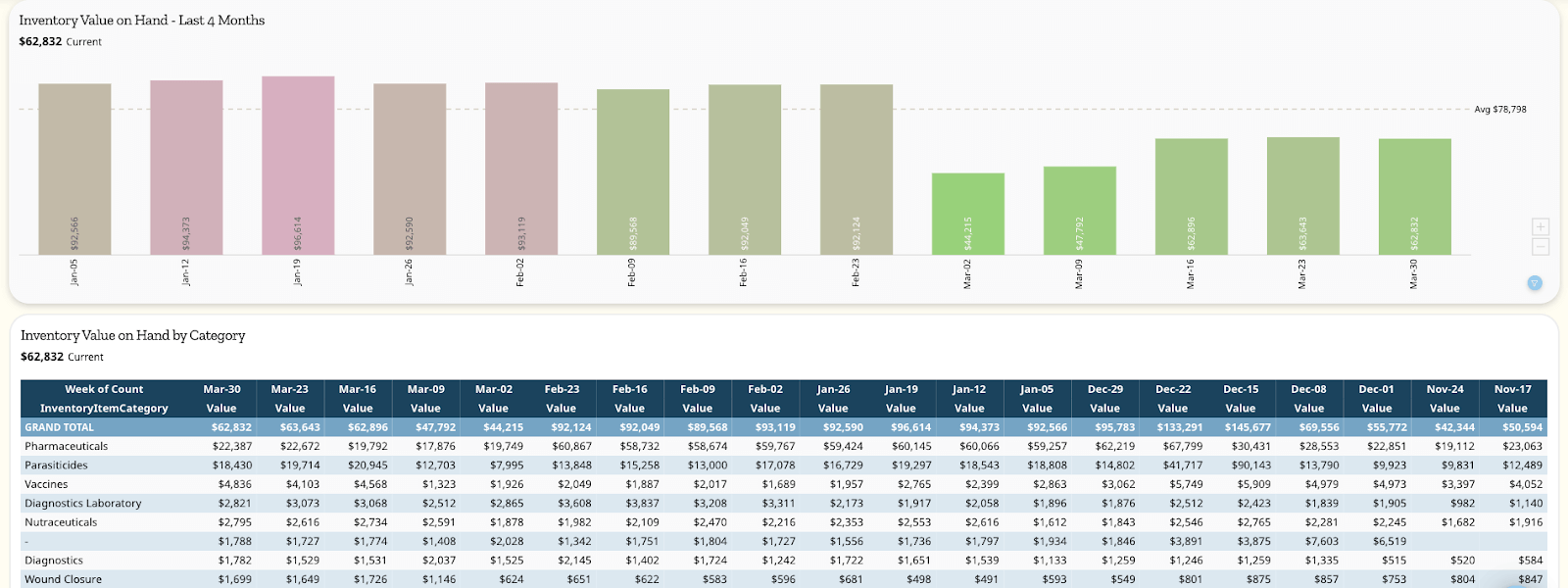
Inventory Ally Helps By:
- Offering weekly cycle count support and usage-based replenishment planning.
- Providing inventory-on-hand valuations to support financial forecasting and cash flow planning.
8. Identify and Monitor Critical Items
Some items are irreplaceable — and running out simply isn’t an option. By flagging critical products and adjusting stock thresholds accordingly, your team can stay prepared even when availability becomes uncertain. The goal is simple: avoid disruption where it matters most.
What You Can Do:
Know which products have no alternatives and increase safety stock for them.
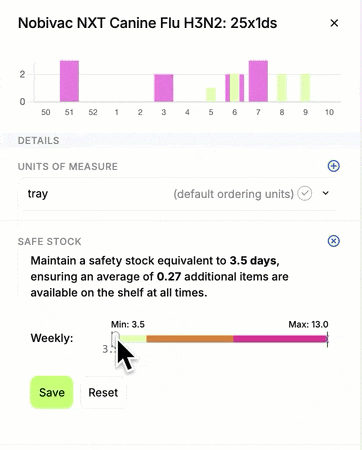
Inventory Ally Helps By:
- Tagging and customizing, adding to the watch-list, transparency and clear communication with the team.
- Customizing buffer stock or replenishment cycles for key products.

Stay Ready, No Matter What
Rising costs and stock issues are tough — but not unbeatable. Book a demo to see how Inventory Ally can help your practice stay in control.

